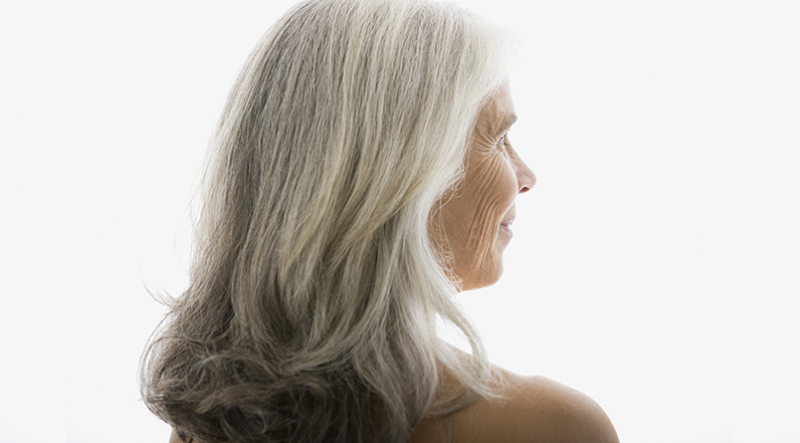
What is a white hair?
A white hair is simply a hair in which color is no longer produced. It all starts at the roots with melanocytes: these cells, located at the base of the hair follicle, produce melanin, the hair's natural dye (melanocytes are also found in the skin, and are responsible for pigmentation and tanning).
Melanin diffuses its colored pigments to the core of the growing hair shaft. The hair is therefore colored as it grows. However, when melanocytes stop producing melanin, hair is no longer pigmented: it grows white.
So, it is pointless to pull out white hairs: as soon as hair turns white, it will always grow back white. This is an inevitable process, even if scientists still hope to find a solution to stop hair turning white.
Melanin diffuses its colored pigments to the core of the growing hair shaft. The hair is therefore colored as it grows. However, when melanocytes stop producing melanin, hair is no longer pigmented: it grows white.
So, it is pointless to pull out white hairs: as soon as hair turns white, it will always grow back white. This is an inevitable process, even if scientists still hope to find a solution to stop hair turning white.

Why does hair look gray?
Gray hair is a pure optical illusion. In reality, gray hair does not exist. There are only two options: it grows colored or white. Either melanin continues to be produced, the hair remains pigmented and it grows colored, or melanin is no longer produced and the lack of pigmentation means the hair grows white. There is no in-between.
However, each hair follicle has an independent life cycle, so the pigmentation process can stop in one and continue in others. This explains the gradual whitening of a head of hair and transition via the gray hair phase, a perfect combination of white and colored hair.
Therefore, depending on the amount of white hair present, hair generally goes from dark gray (salt and pepper) to light gray, then white.
However, each hair follicle has an independent life cycle, so the pigmentation process can stop in one and continue in others. This explains the gradual whitening of a head of hair and transition via the gray hair phase, a perfect combination of white and colored hair.
Therefore, depending on the amount of white hair present, hair generally goes from dark gray (salt and pepper) to light gray, then white.

Why does our hair turn white?
Although hair mainly turns white with age, scientists have discovered other factors that cause it, such as stress and heredity.
Hair turns white with age: from 40 years, the number of melanocytes decreases by 10 to 20% every 10 years, which results in a decrease in the production of melanin and the hair gradually turns white. The process is inevitable and irreversible.
Stress and illness accelerate hair turning white: the existence of genes involved both in pigmentation and immunity may explain premature white hair in some people subject to chronic stress or illness.
Genes affect the number of white hairs: if you have a lot of white hairs but your co-worker doesn't, it may be a question of heredity. Your parents or grandparents certainly experienced it too. Ethnic origin also plays a role in the appearance of the first white hairs - on average at 35 years for Caucasian hair, 40 years for Asian hair and 45 years for African hair.
Hair turns white with age: from 40 years, the number of melanocytes decreases by 10 to 20% every 10 years, which results in a decrease in the production of melanin and the hair gradually turns white. The process is inevitable and irreversible.
Stress and illness accelerate hair turning white: the existence of genes involved both in pigmentation and immunity may explain premature white hair in some people subject to chronic stress or illness.
Genes affect the number of white hairs: if you have a lot of white hairs but your co-worker doesn't, it may be a question of heredity. Your parents or grandparents certainly experienced it too. Ethnic origin also plays a role in the appearance of the first white hairs - on average at 35 years for Caucasian hair, 40 years for Asian hair and 45 years for African hair.






